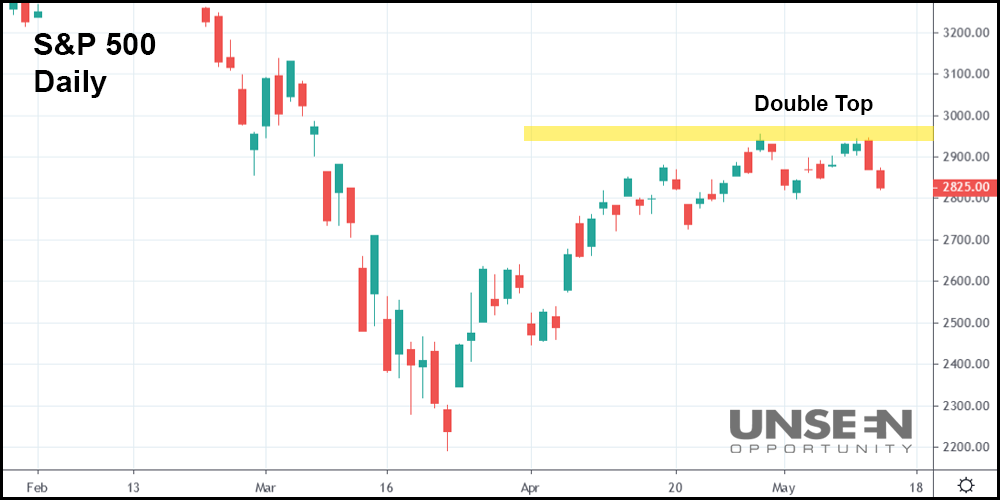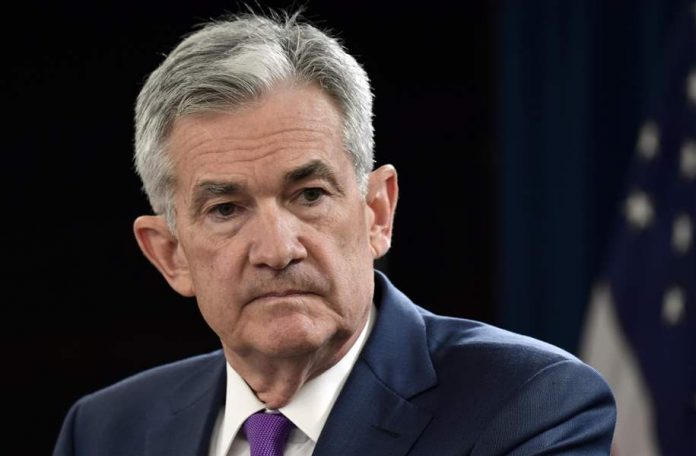Just one day after stocks plunged in an afternoon rout, they’re falling again.
National Institute of Allergy and Infectious Diseases director Dr. Anthony Fauci argued that more “suffering and death” would result from an economic reopening in the U.S. in his Senate testimony yesterday.
The market recoiled in horror.
This morning, Fed Chairman Jerome Powell gave equities another gut punch when he revealed his concerns over a prolonged recession.
“While the economic response has been both timely and appropriately large, it may not be the final chapter, given that the path ahead is both highly uncertain and subject to significant downside risks,” Powell said via webcast.
“The scope and speed of this downturn are without modern precedent, significantly worse than any recession since World War II. We are seeing a severe decline in economic activity and in employment, and already the job gains of the past decade have been erased.”
Powell’s saying what most savvy investors already know; the situation is bad and could potentially get worse.
Moving forward, he commented that the Fed is prepared to unleash even more stimulus if need be.
“Additional fiscal support could be costly, but worth it if it helps avoid long-term economic damage and leaves us with a stronger recovery. This tradeoff is one for our elected representatives, who wield powers of taxation and spending,” Powell remarked.
That could all change, however, if more medical solutions to fight the coronavirus outbreak become available. Or, alternatively, if an uptick in cases results from the state-by-state reopenings.
“The answers to these questions will go a long way toward setting the timing and pace of the economic recovery,” Powell explained.
“Since the answers are currently unknowable, policies will need to be ready to address a range of possible outcomes.”
The market seems to be waiting for “answers,” too. Prudential chief market strategist Quincy Krosby believes yet-to-be-released economic data will ultimately determine whether equities will keep rising.
“You have a market just waiting to see how the economy opens,” said Krosby.
“You’ve got the S&P 500 at an important technical level, which is 3,000, and it needs a catalyst to climb above that. One of the main catalysts will be if the economy can open up without an increase in cases.”

That “technical level” is key resistance (yellow line) for the S&P 500. The index set a double top formation yesterday, which is commonly seen as a reversal formation by technical analysts. And if a reversal is truly at hand, that means the bull rally could finally be over.
A level of key support at $2,800 – the May low – lingers nearby as of midday.
A fall below that price could spell disaster for bag holding bulls waiting on a reopening miracle.
But even if the rally’s finished, that doesn’t mean the market is going to crash. Yes, a correction could certainly be in the cards.
A drop past the COVID-19 lows (in late March), however, seems unlikely pending any sort of calamity.
Like, for example, a resurgence in coronavirus cases. So long as that can be avoided, the market’s long-term prospects still look bullish.
Assuming, of course, a “prolonged recession” isn’t lying in wait.








